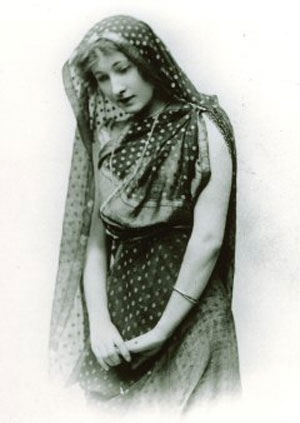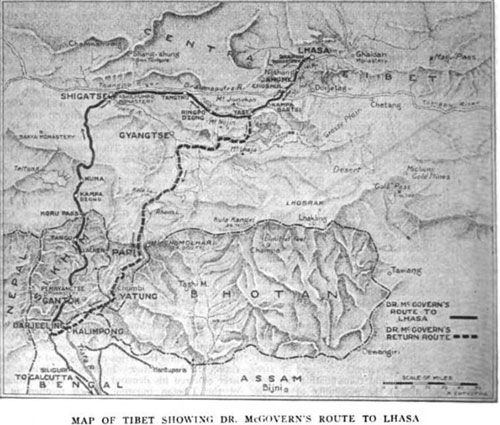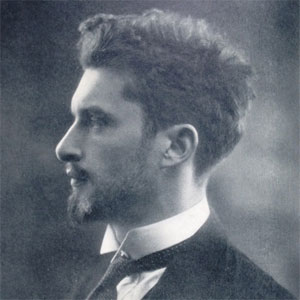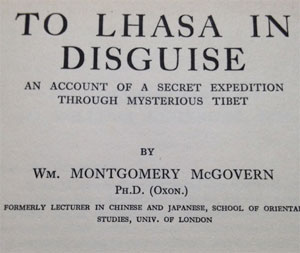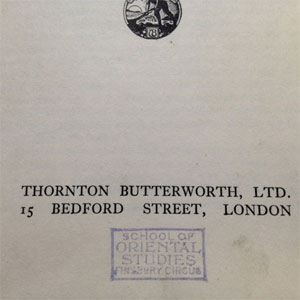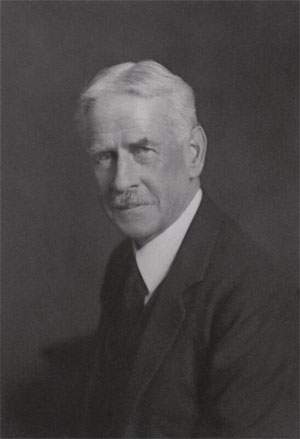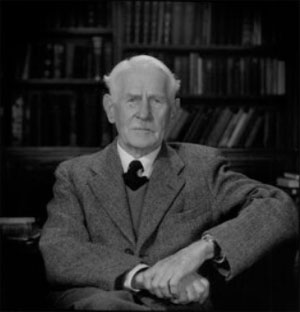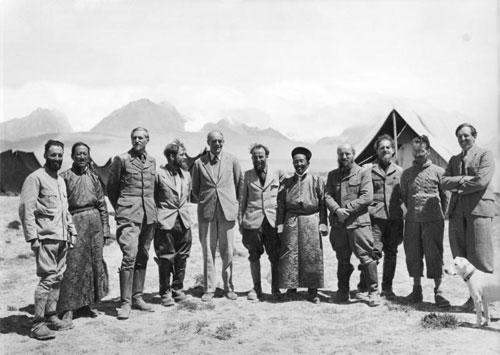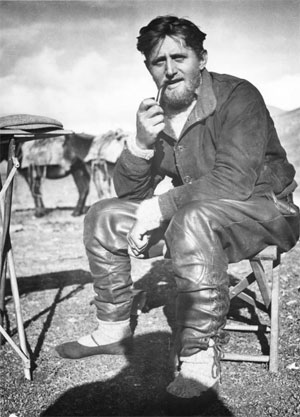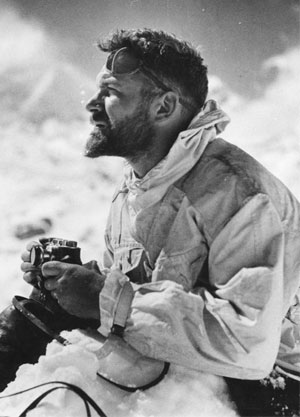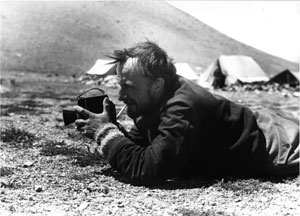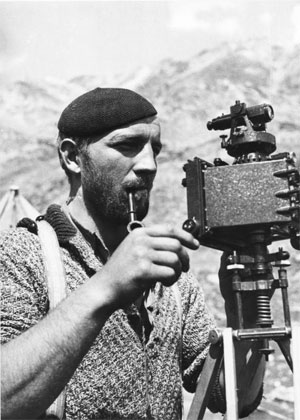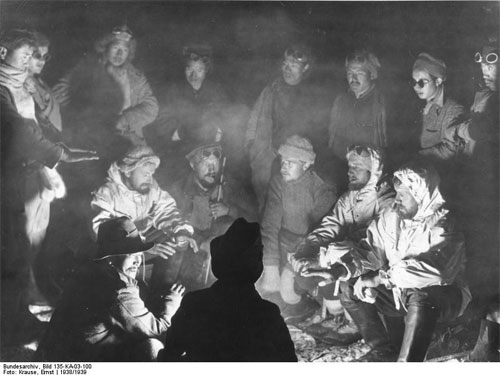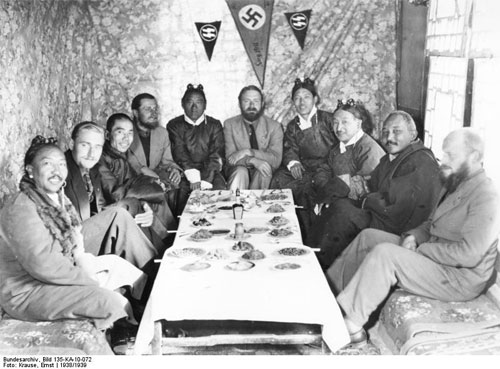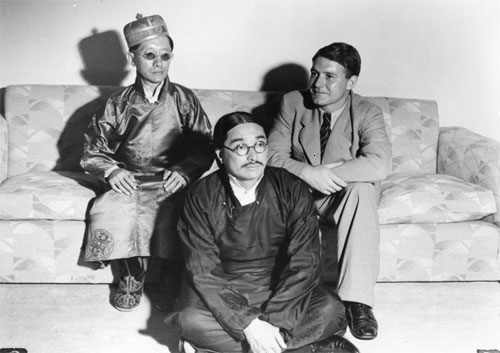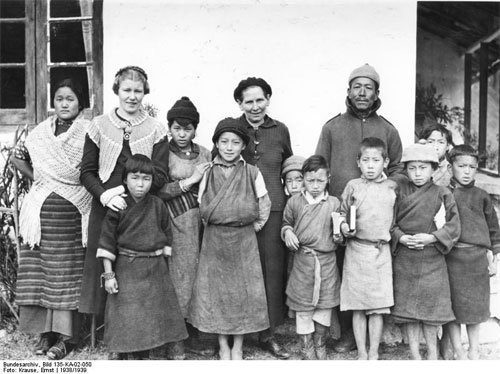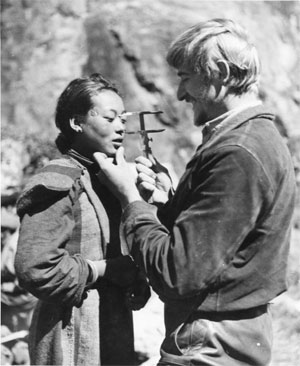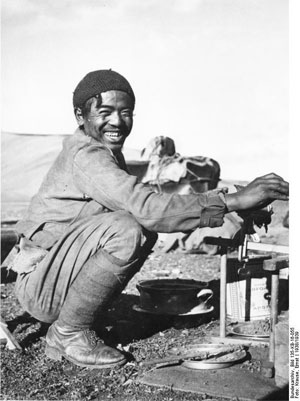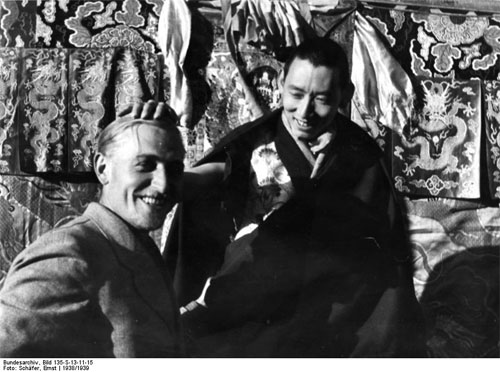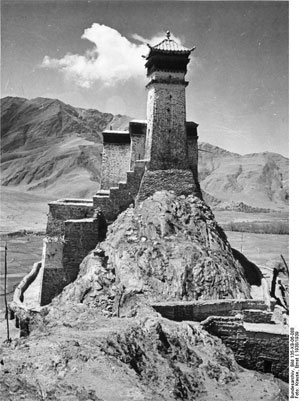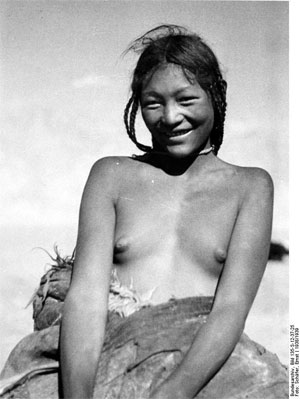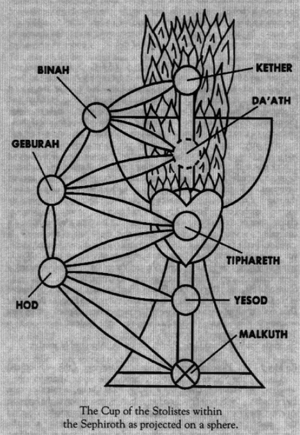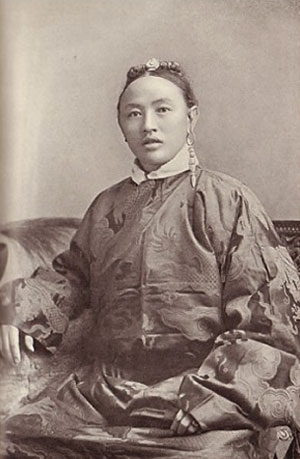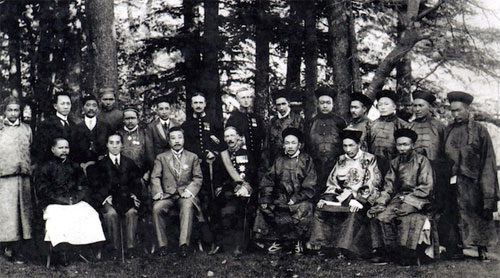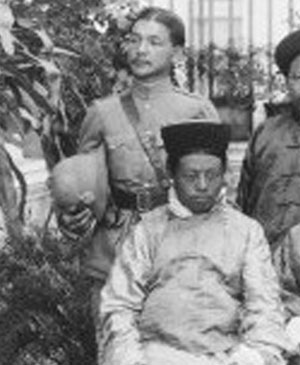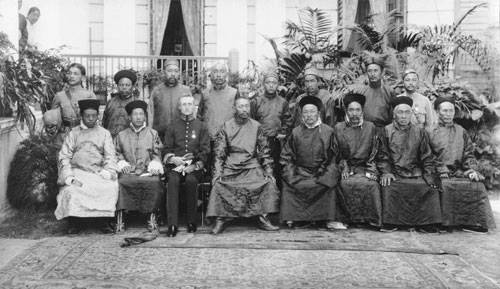Part 1 of 2
The Enochian Experiments of the Golden Dawn: Enochian Alphabet Clairvoyantly Examined Golden Dawn Studies No. 7
Throughout the history of the Hermetic Order of the Golden Dawn there were a number of sub-ceremonial groups who functioned within the egregor of the Order. One of these such groups was called the Sphere Group. It was founded in 1898 by Florence Emery Farr and other Zelator Adeptus Minors who were sometimes referred to as 'Zelators'.In the initiation, AMORC makes the claim that their order is empowered by an egregore, or group consciousness, consisting of both incarnated beings and non-incarnate spiritual masters. The sincere members, who study and practice the teachings of the monographs, receive a spiritual energy or influx from the egregore, which provides the student with regenerative energy and a sense of direction.-- The Prisoner of San Jose: How I Escaped From Rosicrucian Mind Control, by Pierre S. Freeman
The Sphere Group went through two incarnations. The first incarnation of the Sphere Group (No. 1) was founded in the summer of 1898 and was closed in 1901. The Sphere Group was opened to Zelator Adeptus Minors, but was later changed to Theoricus Adeptus Minors and higher.
The Sphere Group (No. 1) was controlled by 'a certain Egyptian astral form' who occupied the centre of the Sphere, see Appendix III. The Egyptian Adept was 'first contacted through a piece of his mummy case -- or so F.L. [Frederick Leigh] Gardner ('De Profundis Ad Lucem'), who was a member of her group for a time' had told
Gerald Yorke. [175.xviii].
In
R.W. Felkin's paper called 'The Group as I knew it, and Fortiter [Annie Horniman]' he listed the original twelve members as 'Miss [Ada] Waters [Recta Pete], Mrs. [Cecilia] Macrae [Vincit Qui Se Vincit], Mr. [Marcus Worsley] Blackden [Ma Wahanu Thesi], Mrs. [Helen] Rand [Vigilate], Mr. [Edmund] Hunter [Hora et Semper], Mrs. [Florence] Kennedy [Volo], Mrs. [Henrietta] Paget [Dum Spiro Spero], Mr. [Robert] Palmer Thomas [Lucem Spero], Mrs. [Fanny Beatrice] Hunter [Beata est Veritas], Mrs. [Florence] Emery [Sapientia Sapienti Dono Data], Miss [Harrietta Dorothea] Butler [Deo Date] and myself [i.e., Robert Felkin (Aur Mem Mearab)]. Our Order names were never used and an Egyptian Figure occupied the centre of the Sphere'....
Now the original Egyptian Group only lasted from the summer of 1898 to 1901, when we had a meeting and we were told that the Egyptian had retired from the Group and the Group as it was then constituted was brought to an end, the reason being that he was changing his place on the higher planes and could no longer work with us ... so the second Group was formed having the Holy Grail on the central pillar.' [175.251].
The second incarnation of the Sphere Group (No. 2) only lasted from 1901 to 1902. In the Sphere Workings the Egyptian Adept was replaced with an image of the Holy Grail on the central pillar which was called 'The Cup of the Stolistes', see Appendix III.From the papers in R.A. Gilbert's collection the reconstituted group consisted of Mrs. Florence Emery Farr (Sapientia Sapienti Dono Data), Mr. Marcus Worsley Blackden (Ma Wahanu Thesi), Mrs. Helen Rand (Vigilate), Mr. Edmund Hunter (Hora et Semper), Mrs. Henrietta Paget (Dum Spiro Spero), Mr. Robert Palmer Thomas (Lucem Spero), Mrs. Harrietta Dorothea Hunter [nee Butler] (Deo Date), Robert Felkin (Aur Mem Mearab), Miss Maud Cracknell (Tempus Omnia Revelat), Mrs. Helen (sometimes called Reena) Fulham-Hughes (Silentio), Henry Edward Colvile (Tenax Propositi), Colonel Webber-Smith (Non Sine Numine) and possibly Miss Ada Waters (Recta Pete), Mrs. Cecilia Macrae (Vincit Qui Se Vincit), Mrs. Fanny Beatrice Hunter (Beata est Veritas) and Lady Zeli Isabelle Colvile (Semper).
The Sphere Group had encountered opposition to a greater extent from Annie Horniman (Fortiter et Recte) and to a minor extent from W.B. Yeats (Demon est Deus Inversus), Ellic Howe wrote that 'Annie Horniman's original opposition to the Groups, which was shared by Yeats, was because she supposed they represented alien and magically suspect activities. By the end of 1902 the Groups had long since ceased to function and yet she was still obsessed by the memory of this awful heresy.' In Felkin's paper on the Sphere Group he suggested that Annie Horniman's constant nagging because 'She takes up the position that she is the Senior Adept; she believes that she is in touch with the Third Order, i.e., the Purple Adept, and that she, although not recognised, is really the Chief of the Order.' [175.251]. The opposition to the Sphere Group has been covered in Ellic Howe's Magician of the Golden Dawn [175.233-251] and in Mary Greer's Women of the Golden Dawn [151.251-264].
In the summer of 1901, the Sphere Group (No. 2) began to clairvoyantly or astrally examine the Enochian Alphabet. Greer wrote that 'Florence attended occasionally, as she found the proceedings disappointing. Writing for guidance in her journal [dated 16 April 1901], she asked, 'Why does Miss O not get a correct key to the Enochian tablets?' The response was that Miss O was uninitiated and that neither Florence nor Humphries could properly consecrate her for the work.' [151.260].
The Sphere Workings contained in this book took place from 21 July to 20 August 1901 and were held at W.E.H. Humphreys' (Gnothi Seauton) home. He had controlled the Sphere Workings and recorded the results in three notebooks. These note-books are located in the Gerald Yorke Collection at the Warburg Institute (New Folder 100). The notes that are identified as 'G.J.Y.' were made by Gerald Yorke. The seer or medium was I.O., but I have been unable to determine who she was.These Sphere Workings, titled 'The Sphere Workings: The Enochian Alphabet Clairvoyantly Examined', were also printed in The Monolith, Vol. II, No. 2. Introductory Notes by Robert Turner. Wolverhampton: The Order of the Cubic Stone, Winter Solstice, 1977. pp. 15-44.
Darcy Kuntz (Frater D.E.U.)
Calgary, Canada, 1996....
The Enochian Experiments of the Golden Dawn
The Enochian Alphabet Clairvoyantly ExaminedSunday, 21 July, 1901.Vision of Sigillum [x] [AEmeth] in [the] Temple in [a] Cave. Got copy of marks from window in V[alet Anchora Virtus]’s bedroom.
Monday, 22 July 1901.S[apientia] S[apienti] D[ono] D[ata, Florence Farr] present. Vision continued. But difficulties at first owing to hostile influences w[hi]ch I.O. said were due to the day being anniversary of a suicide in my [i.e., Humphreys’] rooms.
Vision: Rows of columns leading to [the] Temple and stated, re[garding] worship of 5 pointed star, that of the four great symbols one was absent; [the] symbol of [the] Tablet of Union [?[x]]. Also stated that the Enochian letters referred to Intelligences as well as Letters and the Centre seems not [to be] the N[orth] Pole but the Magnetic Pole.
Tuesday, July 23, 1901.In Chamber of Initiation are 5 brethren. One speaks of the 5 sigils of the 5 Elements --- 5 below and 5 above.
There is an altar sometimes transparent, sometimes opaque, under it is a luminosity from no visible source.
The brethren had on yellow robes with engraved band round waist and the front ornament of each was an eye. Round the neck the Enochian letters seemed woven in the garment. In their hands they held a curious serpent twisted up and back again upon itself. This seemed to have the power of giving transparency.
I hear, “For all that is contains all.” [x]
The symbol on the altar changes – and instead of warmth, there is now a rushing wind. The altar, now no longer transparent seems to float and ascend to blue space, and return with yet another symbol. Altar and symbol seem effulgent. There is light present – but beyond it is sensation and Harmony. Everything seems green. (On handling [I.O. the] bI6/4Ib symbol this turned to blue). An idea of a principle of Force.
Now I am in a bare white chamber, and I feel a sensation of great warmth – the white light seems to glow.
On the walls seem the double triangles which seem to grow and diminish on looking at it. Each of the … [illegible word] points has its own angels. The use of this symbol brings six powers.
24 July 1901.Scene, the original chamber. The Magus directs the clairvoyant to take up position on cross in centre of circle w[hi]ch is in a square. This in turn is a pentagram at each angle of which stands a figure: the walls recede. At the N[orth] point which gives forth a golden light is a winged figure, on his breast [is] the [x] [Mals]. The clairvoyant [is] drawn towards him (away from the centre). He seems [to be] the source of all vitality and more, and of all Light and more. In his hand he holds the Lotus w[hi]ch has 7 leaves (corrected later) [Note: the sketch in MS. shows 6 leaves only. G.J.Y.] and a curved stem with only one leaf and that [is] pointing to the West. The Lotus half in shade suggesting day and night and more. The stamens seem to be a crown of gold. The petals seem to multiply as one looks [at it]. There are 30 of them. The petals are half white and half black and yet not black for a kind of blue permeates everything. As I look the petals seem to expand and become globular and separate from the main stem, part light and part dark, individualize and float away from E[ast] to W[est] and dissolve.
Curled round the stamens with [its] tail touching (not inside) [its] mouth is the Serpent of Wisdom. It lies in the heart of the Lotus – and was therefore visible through the petals, etc. The head of the Serpent was Gold, the body of iridescent and glittering material.
I pluck the single leaf [as] above mentioned. It is striated and on it is the symbol of Jupiter [x].
Now I seem to retire again to [the] centre of [the] Pentagram, and then out (or in) through the corner of [the] Temple through [an] aperture over which is [the] Symbol [x] [Mals] representing Spirit [x]. I seem to be at the beginning of things and to descend down, down to darkness and yet not altogether darkness. The path at the angle of the Temple seemed to turn down and it was along this I went, till I seemed to leave the earth above and so was outside the earth. After great descent came to still water and yet not ordinary water. No light upon it. I go through the water – a deepish purpose changing to red; and then to yellow w[hi]ch in turn changes to bright light. This seems [to be] the circle of the Rainbow, “Eternity surrounds the Finite” I hear.
Now I stand back at the Circle and facing S[outh]. Guide says vision was of Water of Spirit, inexpressible, Absolute, all pervading. The Lotus is the Symbol of Being and the Serpent in the heart of the Lotus symbolized Wisdom and Knowing. The [x] [Mals] represents Spirit [x].
25 July 1901.The Temple seems Astral, i.e. Transparent and the building is self luminous. The walls of the chamber form the circle and the points of the Pentagram touch them. I face the [E]ast, (i.e., the Eastern point, the water angle). On [the] Eastern Point of [the] Pentagram I see a downward pointing triangle with [a] dot in the centre (apex of triangle down). The triangle expands into a luminous Angelic figure with the sign of the triangle upon its forehead (The part of the walls appears to have dissolves or become transparent as the vision proceeded.) Two sides of the triangle seem to be produced to the two corners of Heaven in two luminous rays which seem to embrace a fourth part of the Universe including the Astral and regions above it. The Rays become wider as they ascend. Influences like waves of light, which form Angels, descend to the point and then ascend from the apex up [as] waves of light. The Angle which stands on the point is the personification of the Influences and Lord of that Quarter of the Universe. The Influences descend from the point in the Heavens as wings and the undulating waves ascend – the latter are in 3 bands coloured Rose, White and Golden. The waves seem subdivided to 7 by bands of colours which intermingle. Starting from the foot of the Angel (where [the] apex now is) and forming itself inside the large triangle is a circle.
I hear the words, “Raphael, Giver of Light.” Symbols of the nature of Libra [x] are round the triangle. One seems like a horse shoe thus. [x] [Mals] a horseshoe also with a bar across the horse. The symbols are in light in [the] centre of [the] circle just above the heads of the Angels.
I go up left hand ray of triangle, the undulations [are] forming transparent steps, curved. I am told that each planet has a dual nature. A peculiar and unusual symbol of Jupiter [x] held out. The Planetary natures are light and dark. The vision is for Wisdom and Concealed Knowledge.
From [the] summit of [the] undulations, spheres seem to rise and in each sphere appears a figure or symbol (afterwards suggested that these spheres might be tops of pillars). There are 9 spheres on either side. Three more appear and form themselves (larger) across the rays. They are bluish, and the nearer to the East they are, the lighter in shade. The Centre has [the] symbol [x] [Ceph]. The r[igh]t hand side [has a] [x] [which is] like [the] upper part of eye, or perhaps [x]. The symbol seems to vary. The left hand has a 4 pointed star perhaps [x] [Na-hath]. The vision fades from blue into green, first blue then green: first experiment, then knowledge. The blue and green meet at the point where the Angel stands. The 9 globes are the 9 aeons; there are yet three more to be fulfilled. One aeon = a thousand thousand years. The 3 in the centre [are] not now explained.
26 July 1901.Sitting began between 9 and 10 p.m. Medium on couch. Firstly a sensation of cold and I leave the body entirely. The guides saying they [will] take me to (a wonderful and far distant) place. They make the sign [x] which means ‘that which is enclosed.’ (=’S’, Fam) We do not go to the Temple – but to a new plane – not the Earth or the Astral but the place above – the Devachanic. Here mind is all. It seems [to be] a region of space which is filled with undulations sufficiently solid to see through down to the Astral, but not to pass through. The Astral light from here is very dim.
The prevailing colour, I can only explain by a kind of violet – violet rays – beyond the violent end of the spectrum. The symbol of this region, and that which will call up its influences is the double horseshoe [x] [Na]hath]. It is also one of the symbols which guard and rule over the North side of this region.
These are: On the North: [x] (The Enochian Letter: ‘H’ [Na-hath]).
On the South: [x] (The Enochian Letter: ‘T’ [Gisa]).
On the East: [x] (The Enochian Letter: ‘C’ [Veh]).
On the West: [x] (The Enochian Letter: ‘O’ [Med]).
To these symbols all influences on the 4 sides respectively are obediently. The region extends everywhere.
The influences seem to work on waves within the region. These waves are of mighty strength and each undulation has a dark line running through its centre. The motion is perpetual in slightly flattened concentric circles – each one is complete in its self and forms a beginning of another. So by influencing any one part you equally influence all parts.
This is the region which rules the minds of men. Note that the colour is not exactly violent, but beyond violet and indescribable. My guides, I see, are gradually rising to the surface of the region and I am met by an influence that is like the Wind – having no tangible form and coming in a kind of breeze.
The symbol of this influence is absolutely the Symbol of one of the Northern influences, i.e., the Being symbolizing the N[orth].
The [x] [Na-hath] now seems like the entrance, the double entrance or beginning to two worlds. It appears to be the Symbol of a new Force, sweeping, relentless and eternal, but which can be used and manipulated by him who understands. It is absolutely a mind force; not a material force.
(The vision now begins to face. I handed I.O. [x] Gimel symbol to hold, and the vision glowed – but a voice said, “Enough for a time.” Medium was rather long getting back.) Vision occupied an hour.
(Interval.)
I see now a sea, absolutely light. It is the region [where] the Astral and Devachanic Planes do not touch. Between these is a transparent region and influences there are mixed, being partly Astral and partly Devachanic. They are less material than the Astral, but not so powerful as the Devachanic. They function at different periods and not always as the other two do. But the [Blank in MS.] of their functioning adds greatly to their power of manifestation on Astral lines. And this is the reason why [the] Astral manifestations are so much more powerful at some times than at others. On this Intermediate Plane, water becomes space. I see now a Mighty, Restless, Overwhelming Force – a black rolling Mass – gathering on one quarter of the Horizon and sweeping towards me. (Medium became faint and was restored.)
Seemingly behind all that one sees is the vision of this Resistless Force that sweeps the Sphere and everything. It is symbolized by [x] (Enochian Letter: ‘A’ [Un]). It does not undulate like the others, but moves in a much wider curve and seems to symbolize Destruction. It is the Qliphoth and is always in motion – and breaks all barriers. (I told I.O. to hold up Astral White Cross and the Force departed and calm reigned.).
Regarding the Plane, one of the Symbols: [x] (Enochian ‘M’) [was] interchanging with: [x] (Enochian ‘R’) [which] symbolizes water in every manifestation [on the] Astral and Material. It is [x] (= ‘M’, title, Tal), but there is a nature symbolized by ‘R’ as well as [x] (= ‘R’, title Don) and under these symbols all Astral influences are ruled. (I enquired re[garding] reason for two symbols.)
There are two symbols because water is dual in nature. They represent the ebbing and flowing of the tide. The influences on this Plane are very jealous. (In reply to another question): Yes, the two symbols represent the eternal conflict, Saturn [x] and Jupiter [x], Cambiel and Amnyxiel, the ebb and flow and much more.
(On looking [at] the [x] Gimel [symbol the] waves become translucent. There seems [to be] no movement and conflict ceases. Now I am simply floating and all around is green.)
(Some difficulty in bringing medium back.)
(Interval.)
The Quadrangles are the Key by which these forces can be controlled. The Quadrangles may themselves be combined. The combinations are endless. The forces seem to be controllable through the Quadrangles.
A symbol should be placed within the Quadrangle – depending according to which influence it is required to control. All power on the Earth, the Astral, the Intermediate and the Devachanic Plane is in the hands of him who knows the symbols and their combinations.
Singly they influence, but [when] combined the influences are stupendous.
The Calls are all powerful on the Astral Plane. Combined they are all powerful on the Devachanic, Astral and Intermediate Plane, except those parts of the Devachanic Plane which seem beyond their influences, that is in their entirety. By [the] Table of Union Call, the Master can control a 4th part of the Astral Forces. (Here I repeated first 3 words of Call and asked what happened. Medium at once went into deeper trance and said, “I come. The Master calls me.” Seemingly a “Great Angle” was speaking through her. He held a Wand upon the end of which was the symbol: [x] (= ‘F’ [Orth]).
The Symbols are controllable, and have power on all Planes. The combinations are as important to control as the Creation of the Combined Force which will move at the bidding of the Magician.
It went well to test the influences of the North as they appear. They will respond to these Symbols if they are used with purity of intention. First there should be 30 Symbols (i.e., one for each Aethyr or Call). (Medium stated that in paper, shown her, the Symbols had been written wrong end first – which I had done intentionally.)
The first seven from the other end if used aright and at the proper hour, draw all the influences from the Southern Quarter of the Astral, Intermediate and Devachanic. They are all Manifestations of one force in different aspects.
From all three Planes the 7 Symbols drawn in a circle and placed [Blank in MS.] with the mind quite clear and pure and free, will draw all those influences in one mighty Wave of Energy. The force is that of the fluidic part of the Ether. I see a vast plane of Blue Ether, the region controlled by the 7 Letters. It is Life. Creation is Combination. Suddenly it is getting cold. (Medium was told to come back, but was unwilling and prevented, she said, and was only brought back with considerable difficulty.) 11:50 p.m.
27 July 1901.(Room previously purified with [the] Lesser Banishing Rituals of Pentagram and Hexagram.)
I am on the edge of the Intermediate Sphere looking down upon the Astral. Far below I see a river which changes into a Dragon – the symbol of Water as an Elemental Force. It is the [x] = R = Don. The Dragon seems to encircle the world round the Astral, but not nearly so high as last night: it symbolizes also the Materiality of the Astral Plane and its limitations. The light is generally green changing to violet and yellow.
The Intermediate Plane seems limitless. I stand on the top edge looking down through space on to the Astral where there seems to be waves that move not like our Earth waves – they seem to move from a centre. It is the symbol of generative force and is: [x] [Veh]. (“To [the] left [is] a perpendicular – [to the] right [is] a half curve from right towards the line, a third line drops earthward from the point of junction resembling in some ways a ‘K’. It is [x] = ‘C’, title, Veh.)
It is the symbol of generative force. The waves come from a common centre, but now there comes an opposing force like a black border which seems to prevent the outcoming of the waves. The force of the waves [is] interrupted and prevented by the black rim which also prevents breathing. (Told to hold up Cross and repeat [x] [Adonai]). Now the ridge goes back for a time and progress continues. The waves are much lighter and brighter and are more like tongues than waves and are curved and short. They seem to flow out to where the Dragon encircles the Astral Plane and become merged in it.
Now I advance and become merged in a sort of haze, but quite clear and above the Astral and the Force here is shewn [to] me in a different figure: [x] [Ur]. The waves are rather undulating and lie more in parallel lines – they undulate but do not touch: there is incessant motion in the strata.
I go further in and see that the force is that of: [x] (‘L’, Ur) and seems to symbolize length.
The breathing becomes difficult owing to the contracting force, but this is not evil only opposed to length – it seems to come [from] the other way. i.e., cross-current. I can’t move in it just at first. (I gave [I.O. the]: [x] [Ur] Symbol to hold and improvement took place.)
Now I pass through the region and through a black veil and come to a new region where the light seems red and vision seems to be a space of conflicting forces not evil but different.
The light seems red, a very clear yellow red. The vision of the force on this side is one of incessant repetition of the symbol: [x] [Na-hath]. (The [x] [Na-hath] enables [me] to pass through.)
This internal sphere is a region where personification comes to an end.
I see through this red sea golden streams of life. It seems to be the visible principle of life. Life and (orange) light are in their natures the same. In the Intermediate Plane one sees water in different symbols – and in a more material manifestation to that where I was just now. Last night I was much higher: tonight I shall not be allowed to go to those regions.
The symbol: [x] [Na-hath] appears to be knowledge. To know is everlasting life that is the meaning of the symbol. (All [is] still peaceful: I still see this red crystal sea of undulating wave, a sort of sunset colour, amber leading into pink and a colour I cannot tell. The lesson is that the beginning is the end and vice versa.
(Retraced steps and got back 9:15 p.m.)
Notes: The difficulty in the Intermediate Plane is the difference in the forms and flows of the waves and in their tangibility. It seems a region of strata: strata of different colours not all flowing the same way.
There was first a flowing motion and then in the space where breathing was difficult there were extremely rapid vibrations in several directions and these again seemed to settle in the [x] [Na-hath] form of beautiful rose colour and regularizing to two sorts of peaks while through the whole one sees the sunset colours: [x] Egyptian Horizon. [This latter clearly a note added in pencil. G.J.Y.]
(Interval.)
10:50 p.m.
I am being drawn up and am now in a region of wind. I seem to have passed through the Astral and am in the Air of the Intermediate Plane. It is very cold.
“These symbols bind the Eternities.”
“There are 5 greater symbols.”
I am standing in light above the Astral and a guide is showing me a huge circle set in the heavens and round it are placed symbols. (Re[garding] one symbol): It is a personal letter and the Symbol which rules the Individual life. To each life a Symbol. It is the Symbol of individuality on planes above and below.
It is the Symbol: [x] (‘Q’ [Ger]).
The symbol in the centre of the wheel has the sun [x] for its material symbol, and it is the force behind the Sun. Symbol: a parallel line to the left – and curve to the right. [Not one of the letters of the Enochian Alphabet. G.J.Y.]
Each symbol seems to be one of 4 in a block and so to show 4 sides of the same thing. The [forces] seem to be in different strata and the symbols take the 4 sides, and when you have the four together you can control the whole strata.
Each has a regular sequence, but they have got displaced. Each symbol has 4 sides.
The symbol in the centre glows as one.
In each side of the block there is a different symbol, but one signifies the whole and includes the rest.
The centre symbol is: [x] (Enochian: ‘D’ = Gal); but seems formed of twisted serpents. (Here [the] region became so cold that [the] Medium had to be brought back. Ended about 11.45.)
Notes: Each block or cube of 4 squares seemed to elongate into a pillar. They seemed to bear the signatures of the very highest. I mean, they would draw down influences of the very highest force sfor the circle. The circle suggests that the force of the symbol never fades. There are 32 rather than 28. The number will be explained later. There are 7 groups of 4 each. we shall see them or part of them next time. Thus is there a column and ¾ missing from the list I have and without them the key to the cipher cannot be obtained. The blocks group the manifestations of the same force which might easily be mistaken for other forces.
28 July 1901.On an edge of the wheel which seems [to be] the edge of a world, perhaps a planet [? Moon [x]], it is the wheel of another aspect. The symbols are there: they now seem portions of districts mapped out.
I see symbols as last night, Cubes, but now they seem apices of a tremendous building: towers not pillars.
The building seems [to be] a temple. Before me is a wide gateway: it is the symbol: [x] [Na-hath].
At the entrance [there] seems [to be] a curious cloud not dark, but light. I am passing through ice and it is very cold. Now I come to a dark barrier (I gave symbol: [x] [Na-hath]). The symbol is reflected in brilliancy on the barrier and I pass through. I see a long avenue which seems to reach the setting sun. On either side is an avenue or gallery formed of 4 square pillars. The pillars themselves form symbols. The symbol of the place is: [x] (= ‘C’ [Veh]). This is the first symbol – complete in itself. By it the influences of the district are enclosed and their forces increased. The symbol is a sickle. It stands on edge – where the hand would be is a crown: [x]. The blade has 7 sides and the edges appear curved into waves or wings, undulating. The crown that forms the handle rests on a block of black marble, apparently. It is 4 square, and there are symbols or dots or squares arranged in some sort or order upon it. Yes, they are Geomantic Figures.
The symbol seems to symbolize June. The Crown is the Consummation. On the block in Geomantic Figures is read the limitations of the age.
The blade is in constant movement and seems to represent the swaying of human life. It is 7 sided and of many colours – to represent time in life. The dots form themselves into [x] [Adonai] (Lord) of Time. There are two square dots on top of the last letter. The symbol seems to grow into a huge standing figure crowned. The black square becomes his girdle and the lines of the sickle become his robes … (10:40. Medium brought back here as warned.)
(Interval.)
I seem [to be] standing behind the sickle and the sickle is behind me. I see wheels – rushing, whirling wheels of fire. They are the symbols of [x] (= ‘L’ [Ur]) in groups of 3 making a sort of circle that whirls. They are the spirits of time for an appointed end.
The symbol is like the ‘U’ inverted or like the horseshoe with one side elongated and seems [to] = Th. [x] [Mals]. [Note: Not in Enochian Alphabet. [x] = ‘P’.] I pass through the Symbol. Every Symbol has a different atmosphere. It is very warm and I seem [to be] carried along by the fiery force which seems to rush me round in a stream of yellow light. (I repeated the word: [x] [Tetragrammaton].) The guide takes my hand and pulls me into a kind of shelter and the rushing whirling wheels go past. They are the primeval fires. They seem now to rush along towards a kind of loop where they circulate and form the symbol: [x] [Ceph].
I seem to be coming to a country and am carrying the symbol: [x] (Ceph). The atmosphere is brighter and clearing. The [x] becomes very large and seems to fill heaven and earth. It seems to be forming into a road or path leading to a new region. I have passed through the symbol and I see three rays that are the paths of three planets. That on the right as I approach is of [x] [Uranus] that on the left has not yet been named, it is beyond the path of Neptune [x]. In the middle is the path of Saturn [x]. The [Blank in MS.] seems connected with Uranus [x] and is a form of Higher Fire, a kind little understood. Herschel [or Uranus [x]] is cold above, but has latent fire within. Mars [x] typifies ordinary energy.
(Medium came back without much trouble, but had great difficulty in awaking. Said to be owing to the Fire and to the fact all the symbols had not been given.) The sickle was more thus: The blade was of seven layers parallel varying from rose to yellow –
DISK [x]
30 July 1901.(Previous to sitting the Medium was nervous and I felt resistance in purifying the room. Medium’s guides throughout seemed to expect difficulty.)
5:30 p.m. Started through window. Passed through golden clouds and atmosphere became very cold. Now on edge of great covered abyss – suggests the other side of the Moon [x]. Below is a great black lake. On holding up the [x] Moon symbol the crescent is reflected in [the] lake and becomes a boat into which [the] Medium gets and sits in [the] middle, a guide at the helm and a guide behind her.
In the sky appears the sign Venus [x] like a star in the heavens and the boat becomes a platform and ascends to it, becoming a shining luminous platform. The cross of the sign becomes a doorway above – the disc becomes a revolving sphere: [x].
Above doorway are 2 symbols – no. 5. On holding up [x] Venus symbol, they glow red and seem to form a motto or name. It is one of the key words. Query word ‘Astarte’ or something of the same meaning.
There are 7 characters and they are from the so-called Theban Alphabet. (Self walking Medium down shining corridor with square pillars on either side. As we pass square columns they seem to become transparent and glow with bluish light and each bears a symbol.)
I am looking at a square transparent block of blue bearing the symbol: [x] (= Pal, ‘X’) on r[igh]t hand side. With it is [the] sign [x] – no, simply ‘X’ English ([x] [Gal]). The symbol is a name of – Symbolises breath – it is also a symbol of division. As I hold up [ b] Beth [symbol]: the ‘X’ divides into two crescents: [x]. I am at a cloud which by holding up [x] [Gal] allows me to pass through. It is the region of Duality and is very full of shifting clouds. (Medium told to return w[hi]ch she does with bad grace and on being shown [the] Theban Alphabet thinks she identifies inscription letters:
? Could it be [x] [Shaddai El Chai]: [x]
Guides were rather against her going again and said they were powerless. There was also written: ‘Nahusa calls” and N[ahusa] – was afterwards said to be a “Daemon”).
(Interval.)
The scene was now laid in the Pentagram room of the Temple and I stand at the Western angle. (She says and maintained she faced South but this is unlikely and she corrected on seeing [the] diagram.)
I stand at centre from which 3 paths run to the Air angle which seems symbolized by: [x] [Ceph]. On the point is a star of 5 points. (Voice says “Look again.”) No, on 7 points and each seems to radiate to 7 paths “so 3 leads to 7.”
In the middle of the Star shiens: [x] (= ‘B’ [Pe]). The 3 straight lines from the Pentagram are the 3 strata, the 3 angels or the 3 divisions of the Air. (Voice says “Look to the right.” On [the] right hand side is a flame of perhaps Air or Fire. No, it is Spirit [x] undulating wide and it rises upwards. The colour is clear white. (“Look to left”.) On left I see a green globe revolving in two halves or hemispheres and held by an Angel. I hear the words “The Eighth.” It rolls incessantly. Now it reflects all colours as it passes blue, green and white. It is the power of invisibility – and assimilation from the Highest.
It represents one of the Air symbols, namely: [x] (Enochian ‘U’ [Vau]) and this character confers invisibility – Yet, it is of an Akashic character.
The Angels hold out their hands [x] and voice says “Look above”. I see above white wings and hear a rushing, it is the wings.
The walls of the chamber fade and the Pentagram becomes projected in[to] space as a solid, and becomes rose coloured.
(Advised to bring Medium back and she came but not entirely as guides told her. She was somewhat wild-looking and not quite herself. She was under [the] impression she had been talking all the time to me, but it was not so, and several times she thought she heard my voice, but it was not.)
1 August 1891.Passed up and am in midst of white light with sort of Golden colour beneath it. It seems to permeate everything and I seem part of it. I am not alone. Two figures are with me. One on the right unusually tall, seems an Astral form. He has on a long robe, the edge of which is marked with curious symbols and repeated over and over again is the symbol: [x]. “I am a Guide” he says, and he holds up in his hand a symbol or emblem or shape somewhat similar to the [x]. It is a disc with a cross in the centre like a St. Andrew’s Cross. Disc has a silver border with figures in it. The X is blue – the blue of the sky with the light shining through. It seems large and has a circular handle like a scepter.
He shows the other side and it seems to have the same sigil but instead of flat [it] is hemispherical. There are curved symbols like serpents or sign of [Blank in MS.] which pass along the edge of the bar. As he holds it, it becomes part of the mist and the disc begins to revolve and I am drawn towards it. It is the sigil of the Moon. Four letters are connected with it. One thus: [x] (Enochian ‘U’ [Vau]) and [x] (‘G’ [Ged]) and two others. I am approaching Jupiter [x]. On saying ABA [x], the light concentrates to a dark spot. (The … [illegible word] seems to have passed – now after a few minutes).
The control of these regions is under 12 symbols – of which 12 [only] 9 are known and 3 [are] lost. They are the sigils of the planet [x] [Uranus]. Everything now turns to the blackest violet with a green light.
I am in the midst of the light and the region of Jupiter [x] had revolved past, and now this curious darkness seems to shadow the place. I see the symbol: [x] (‘A’ [Un]) in combination with [x] (= ‘E’ [Graph]). This means apparently that [x] [Uranus] is represented first by one symbol then by the other, according to the points of his path. They are destructive symbols but all destruction is not bad. To destroy is to re-create.
The temperature is extremely hot, yet a cold wind is blowing. One comes and stands between me and the disc and holds in his hand a symbol like a diamond. Like a solid diamond and it has 5 sides and becomes a Pentagram and I pass through the symbol of the Sun [x].
(Interval.)
I am on Earth and I see a square building and three terraces leading up to it. It looks like a Jewish Temple, but not on Earth. There seems to be a great deal of incense about. The sign: [x] [Na-hath] is present. I am in a small square chamber and from the centre of the beams directed to the centre I look up and see the [x] [Na-hath] glow with a luminous golden light and in each side or half circle of the sign I see Geomantic Figures. I hear, “For this vision the end is not yet. There is no end.” Air very oppressive. A wind sweeps through and the glow fades. On the East is a purple veil. At the 4 corners are 4 characters. “Count from lower right hand corner.” (I see a table of squares.) Then to lower left hand corner and finish up at the right hand. I count 5 squares along bottom and 7 up each side. It is the Tablet of Re.
It is the power of 9 and controls the angles. Part of the Tablet controls the influences of the Upper Air.
7 August 1901. (S.S.D.D. [Florence Farr] present at this sitting.)
I am on a plain flooded with the golden light of sunrise. The atmosphere is very clear, but violet. There are 9 spheres. One in centre and 8 revolving round. Each one revolves itself and also keeps the circle. They revolve round a centre of light which makes them very bright. The centre glows and forms into [x] (= ‘X’ [Pal]), the sign of Dual qualities.
I am still on the same sphere but a Guide is with me – the atmosphere is green. A ray passes from my sphere to the centre and now rays pass and make as the huge spokes of a wheel. (Note well.)
The Guide says, “Watch the letter.” It seems to form itself into a pathway. “This,” he says, “is the influence of the 9th circle and the power of 9.” The spheres appear now as circles rather than as spheres. The power of 3 is the keynote of the Universe, it is the one with the dual.
What appeared as [x] [Pal] looks now as a pathway turning to the right. I get the word ‘Gabriel.’ Atmosphere [is] still green, now red, now yellow, and now I observe the sea. It is, I fancy, really air.
I pass over vast stretches of water and the globes are far above me, but it is not material water. I am now in the plain where the Temple was, but it is replaced by an interminable river. I follow it and come to some high rocks on which [an] inscription is in Theban Characters. Letters in groups of 2. 6 in groups of 2 – no, 7 or 8. Inscription means destiny, begins on Theban with a ‘K’ (? Karma). I approach the rocks which now have more inscriptions. It is a place of Tombs. I go up steps cut in the rocks. Each step on approach becomes a transparent block containing a red character. On the first [x] (‘U’ [Vau]), on the second [x] (‘F’ [Orth]). I have risen. The circles are the synthesis of Azoth of the Powers.
(Interval.)
Eastern symbols have a personality which cannot be caught if translated.
The 9 Gods in the Boat of Ra = the 9 Powers. There seems 3 plains each ruled by 3 powers. The Material, the Astral and the Higher than the Astral, but the first two are almost interchangeable. (?) Dual: Ptah and Set.
I am now on the edge of a huge disc with all the colours of the rainbow, 9 colours, 9 powers. Earth [x] is the visible expression of Air [x], Fire [x], Water [x], [x] Salt seems the Life-principle, not quite Khepera, for that has a wider significance. I now go up higher to a clear atmosphere and I am looking at great blue waves that look more like flames – and possess a two-fold motion, along, upwards, and across, and each as it crosses seems to form a figure.
There are five points connected with the lines and they form: [x] (‘D; [Gal’). These [x]’s form themselves and I count 9.... i.e., 4 figures of 5 points each – and begin to revolve and become a sphere. It refers to water. Water here on Earth apparently. Light above. There are 9 Angels.
This has to do with: [x] (‘B’ [Pe]), for it is the controller of the rivers, the smaller waters and not the huge masses which are apparently a combination. [x] [Pe] is the water of life, the guardian of Life. It is the water on the Material Plane, for without water man cannot live.
The third alchemical symbol [x] [Sulphur] is fire which manifests as a surrounding light and seems to permeate. It is [x] [Gal] [whose] colour [is] scarlet not red. It is material fire.
The [x] [Ceph] is the Planetary Fire, answering to the Astral.
And there is yet a third symbol signifying fire, namely [x] (= ‘L’ [Ur]), the inner spirit of fire, the vitalizing principle of fire.
Yes, there are 9 Syziges, 9 principles.
8 August 1901.There are not only 21 letters; 28 is the proper number. [Note: the normal number in the Enochian Alphabet.] I am standing in the midst of green and see two symbols which represent the whole alphabet. These two in addition make 30. The guide shows a huge world of green transparent – like marble with veins running through it. I stand upon it. Guide takes Wand and the pavement seems to glow with innumerable stars which group themselves in the form of letters of the Cypher. They form in 4 groups representing 4 Elements and then 2 which make the 30 represented. The 2 Elements are unknown to us at present. The other elements are Air [x], Fire [x], Water [x], and not exactly Earth [x]. The Earth here is a mingling of Air with Fire. Water [is] to have no representation here. I see represented a medium which encloses everything. It is Ether, but it seems more. I stand and the letters group themselves from a circle midway between Earth and Heaven, and I am told to count 4 from the order of the letters shown.
This is the order and form shown:
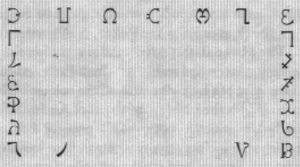
The missing ones refer to the Astral Ether. The Trinity controls the angle. Each corner of 3 letters represents an Archangel or ruler of a 4th part of the Heaven.
The lost letters partly belong to the dominion of Lucifer and cannot all be given – not in this dispensation – nor to a human being. His Kingdom is waiting for his restoration
(Interval.)
Lucifer, Son of the Morning [Stella Matutina]; his was the region of the Higher Ether. I am passing up through clear air. On taking [x] (‘O’ [Med’) the whole atmosphere seems agitated and shakes and quivers in huge undulations. I seem to be floating, the light grows dim. The upper Ether represents the higher development of the … [illegible word] the mystery of the Divine Being. The letters represent the 30 Ethers or rather 28 plus 2.
9 August 1901.I ascend a green shaft of light. All around is lightish green. A guide not known before, comes dressed in white garment and he holds twisted serpents, a Caduceus Wand. They are the symbols of Mercurius. Air is Ether. He says, “Take my hand” and we stand together and pass down a road. On each side are two roads – like a cross. We leave these and pass on to a great revolving disc of greenish colour.
Different shaped waves then to those on the sphere yesterday culminating here on the top or North. We stand on the apex of the North and the light flows from us into wide horn-like rays curved towards the North.
[Note: Here the inked fair copy breaks off. Remainder of this and following visions [were] copied from the rough pencil notes taken at the actual sittings. G.J.Y.]
Guide holds his wand and serpents become luminous and I seem to breathe a kind of Fire, and as the serpents wind the atmosphere, ground and even the light seems to become like glass of transparency due to diffuse radiance. My number is 5, the power of 5, the Pentagram [x], starting here, but [I am] looking [at it the] wrong way and [should be looking at it] from [the] left hand thus: [x]. On [the] right hand [at the] top corner they made: [x] (‘G’). They say that 9 (i.e., God) is our limit and the boundary of our influence.
The Pentagram appears suspended and is now lying parallel with us or rather it seems that the top of our sphere lies in its centre. It is glowing with golden light but with a greenish metallic luster and blue flames play under it. The blue flame is Salt [x], the inner significance, the golden glow is Sulphur [x].
The yellow flames on surface of [the] Pentagram seem [to be] intersecting triangles, the white light plays about it in tongues of very finely pointed light: the 2 diagonal lines have yellow trans[aren’t] and white light [an [x]) along the bisecting lines, they glow blue turning to purple – this is the energy of Mercury [x]. ‘Culminates on the 5 points.’ The bisecting lines are those which form an angle with the diagonals, and each point has an Angel or Spirit in connection with it. Yet only 3 symbols to Mercury [x]. 2 are dual. These are the centre 3 on [the] left hand side of square that actually belong to Mercury [x], but these symbols in each instance have a character of their own but share certain characteristics. Hence difficult to place what actually belongs to each because the manifestations appear so similar to the researcher tho’ in the upper air vast differences are easily ascertained.
All the elements have common qualities, this Spirit [x] – Air [x], Sun [x], Water [x]. Different forms of energy controlled by the Spirit of the Elements. Earth [x] is a manifestation on a lower plane of what Ether is on the upper.
(Interval.)
Up shaft of light [is] white. The square now appears like constellations spanning the Heavens and each symbol becomes a sun, ruled by an Angel of its own, but at the corners stand 4 resplendent spirits. I have a guide. He holds in [his] hand a circle or disc.
Disc in 2 metals but appears to have no inscription. Metals pure white, one a transparent yellow.
Raphael seems to rule the right hand [or] N]orth]-E[ast] angle, Michael left [or] Western angle, Gabriel lower East angle, and Auriel at bottom lower angle to it. Each is an embodied essence of a manifestation of the Deity.All the symbols of the globes seem scintillating. Their spirits seem to hold or show each letter, but for the angles, the Archangels stands on one and holds one in each hand. They glance on the 2 below and the one above crowns them and radiating shafts appear to form a pentagram at each angle.
Faintly glowing in centre there is a new symbol. A symbol of absolute balance and appears to be formed by the 3 sides of an equilateral triangle in a circle or disc. It is translucent and absolutely white. It seems to advance. A name of 3 letters, begins in centre, not I.A.O. There is a second symbol but not to be given tonight. I think second guide was
Enoch.
11 August 1901.Ask for guide. Name ADAN, [x] = He who reveals. He stands wearing straight purple garment, on his breast hangs a large circle enclosing a Pentagram of which the centre appears to be sunk. Pentagram glows with yellow light – a blue jewel in centre, and on it I see marks like small squares, one square at the top, then 4, two on each side:
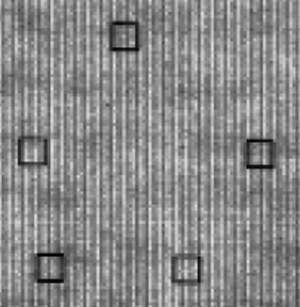
They seem to glow red through the blue jewel. The squares represent the secret sign. Those who would enquire we give this proof. Unity. Unity. Trinity again. The 7 includes all. Now stay not to enquire what is not entirely necessary to the question.
Letters now arranged in a triangle.
I am on a grassy plain. Sun is setting and there seems no one in the world. Guide ADANNI, [x]. Behind a small tent of goat’s hair hung with skins. On the ground in front of us the grass has been cleared by fire [and] there is a plain black space. On the space which measures 10 ft. square is drawn, in red, a triangle apex pointing to the East and I face East. The sun sets immediately behind and the lines and sign on the triangle seem to become illuminated. Behold the key to all the great mysteries. Letters seem to begin in the centre of the base line.
(Interval.)
Only the present High Priest of the Jews holds the Key in Jerusalem – to one in each generation is it given. Specious reason why at a time to Dee was given. Dee was a Jew.12 August 1901.Guide was same. Holds 7 pointed star. The purple robe is an over robe and he wears a white robe underneath. Headdress sort of shield with curving horn. We are in mist, the wall of mist parts and I see the triangle. Connected with building in this Cypher, seems to be [x] (= ‘T’ [Gisa]).
13 August 1901.We ascend and are in a place where everything [is] very light. Guide ADAN [x] takes [my] hand. We stand with triangle as an arch and we both stand on [x] (‘B’ [Pe]) on base. That signs may be comprehended we will take them in order. The 3 angular and one in centre.
[x] (‘B’ [Pe]) is Light, the sign of illumination. Above it stands the double arches, they represent a city. To it came the Illuminati. It also signifies the Presence. Through its archways none but the chosen ones may pass. It is the entrance to a city and there is no exit.Take angle to left at [the] point = Tau [x], not the extreme base universe. It is [x] (‘T’ [Gisa]) and is surrounded by luminous waves, it is a water symbol – the water of existence. Gimel [x] makes waves red as if by setting sun. It typifies water of existence, of Life. [An illegible line here. G.J.Y.] Fire of Water interchangeable with Water of Life. Am standing in this Sign and angle is S[outh]-E[ast].
[x] [Pe] = fire of Ether.
(Interval.)
The upper [x] [Na-hath] and lower [x] [Pe].
I stand at lower angle, its two arms stretch up like pathways to the Heavens and glows with dazzling bright blue. [x] [Pe]; what you thought was water was the Ether of Fire. It represents the Sun [x], also symbol of all life and is all embracing and occupies a 4th part of existence.
The great arms have 7 divisions, meaning the 7-fold manifestation of power because 7 represents 2 … [illegible word] and unity. Each step is a progression. I pass from base of [x] [Pe] to [the] top where 2 points terminate at lower corners of the 2 arches. Triangle divided into 4 parts and 4 Archangels hold dominion over them.
We pass to the colonnades of the city that typifies Eternal Wisdom and the Eternal Wisdom illuminates all as far as the points of light reach.
On [the] point is [an] inscription or symbol like ‘H’ not Enochian. This is part of the power of [x] [Uranus].
16 August 1901. S.S.D.D. [Florence Farr] present.
Going up a rainbow. Prismatic colours broaden to strips taking whole angle of horizon. The curve is together over water – over the Crescent Moon [x]. Reach summit – everything very bright – white prism underneath. With me is 7 and 7 and 7 too visible for Spirits in appearance beyond average height. Garments mingle into surrounding light. Serpent emblem everywhere. On translucent golden pavements [with] red waves beneath. Some force drawing us forward. The twisted serpents change and grow. Nothing but twisted serpents. Asked what they mean. Guide writes with serpent caduceus. These are the beginning of wisdom … Now [we] ascend 12 steps. On 1st everything very cold. 2nd step difficult. Guide takes hand [and] he holds a Wand.
Everything green and transparent. Round Wand letters – on steps, Hebrew the oldest. First step ‘F’, second ‘Y’, third ‘G’. We pass onward and I see every step has symbol. I am on fourth step, light dark, a dark green, the letters form the markings as marble. This ‘Y’. Now changes to vivid rose. A saying “HVH’. Cloud comes and shuts off vision. Comes from above. Not a cloud, a Presence. R.A. waits. A revelation will be given.
Tablet stands upright like a pillar. Divisions illuminated. 4 above the top. 5 down in each division stands.
Top has 2 parallel perp[endicular] strokes and then short bar lines. KALDC [x]. R.A. waits.
To read the tables would release those confined within, which would be calamitous. How to work will be given in this hour yet will interpretation be withheld. Hanoch [x] walked with the All-wise. To him was given much wisdom. That released some but some are still held, to all the time is not yet. “They are the Elemental Powers.” Interpretation not given to man in this age.
[Note: Drawing of an eye in a circle and the letters: WIR, UR, AR-UGH]
20 August 1901.
Guide: “I am ZARAN [x] from …”
Pass through deep blue to yellow and then radiant light. Presence holds in hand a circle with a pentagram. On his head a double crown, in his hand a roll. It unfolds in two parts. “Are these what ye come to hear? They are revelations given to Hanoch [x] by him ascribed on the stone, within the symbols all is found of Wisdom and Knowledge. Yet it is given only to those to whom it can be given. Can be given in part.” They are the summons to bring the powers, the greater cube is ruled by a greater. The second Call, the water. By it rain will be brought, the rivers planted, these are arrested.
Letters are symbols given to bring the concealed knowledge to this age – meditate on and use the groups, [it] will to the future bring true happiness. Letters not conventional, but part of a priestly code. They were part of [the] secrets of priesthood, but since Hanoch’s time to all save only a few.
Presence takes my hand, on the hand is a large signet, the Sun [x], rays interlaced form a circle.
Call ARDOTH [x]. To me the letter [x] [Gal] refers. I bind, I also loose.
Place me on the N[orth]-E[ast]. (I hear rushing of many waters) of the line, the first line of the Tablet. Dee did not understand their use. The spirit that answered to the control gave him no clue to the real power of the Letters. They have a two-fold quality. Next symbol to look at [is] [x] [Pe]. He openeth and no man can shut.
(Interval.)
With right use of the tables one can divine the thoughts of the Elements. 9 along top, 13 down. No, 10 along top.
Tables suspended.
XRVVAEHEOR. [Note: light pencil line through EOR. (?) G.J.Y.]
Holy is Eloi. Great is the Elohim.
I see blood falling. It is the beginning of the Invocation, also symmetrically law. On reading Call, Tablet became illuminated and a wind rushes. Guide appears holding Wand, indicates letters in diagonal manner from top right hand corner to left. In the centre of these Tablets in midst of letters is a Hexagram.
